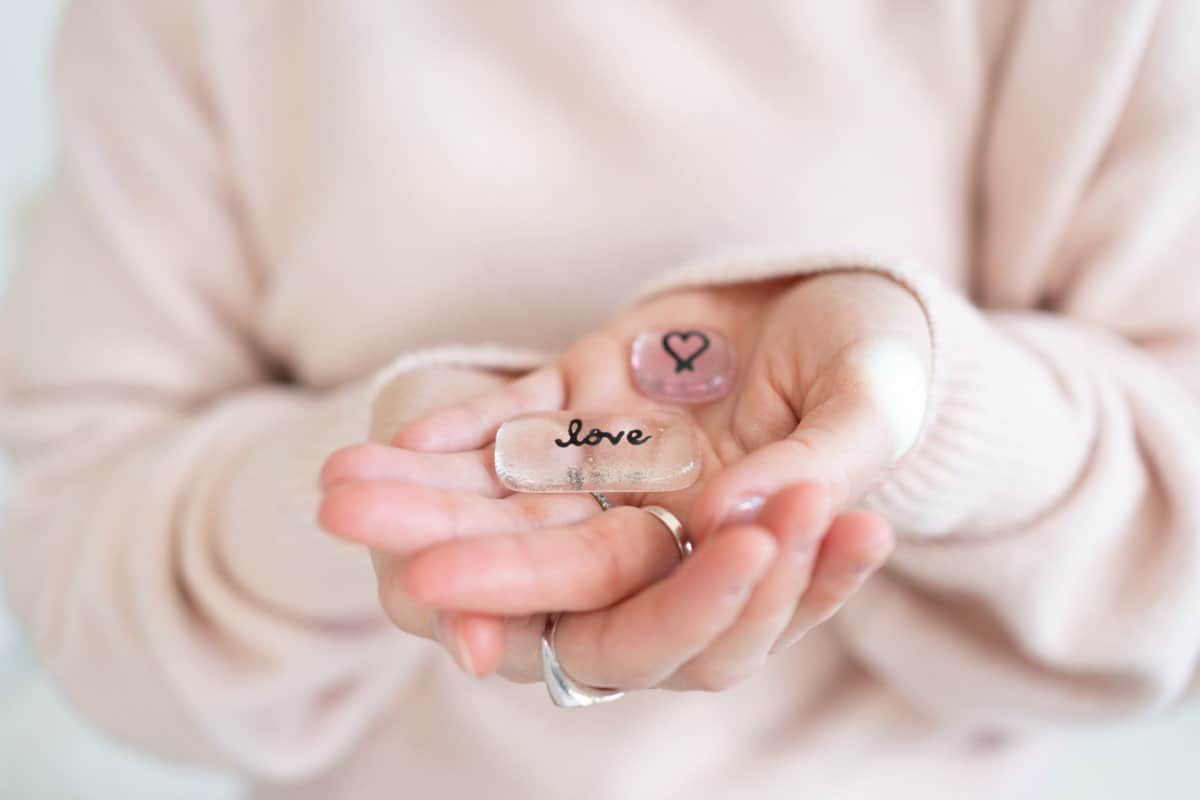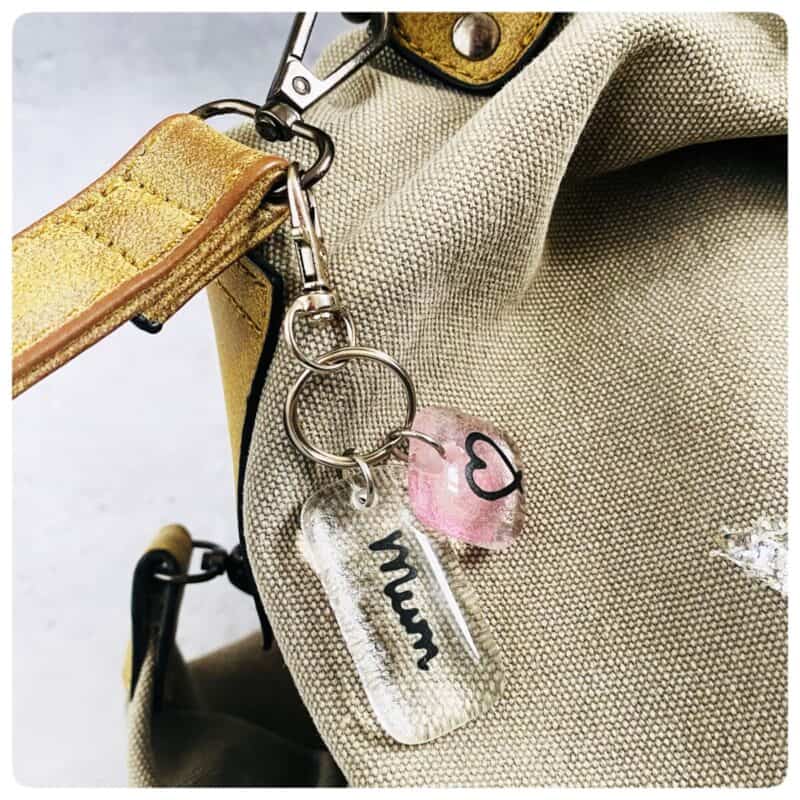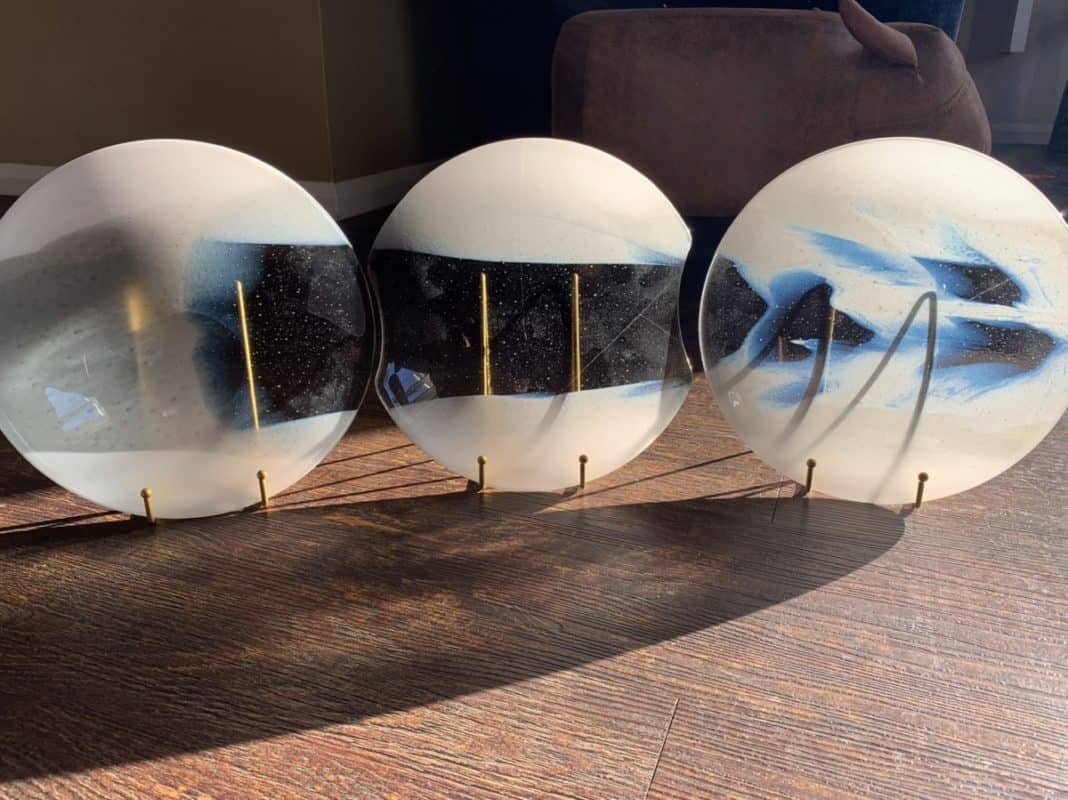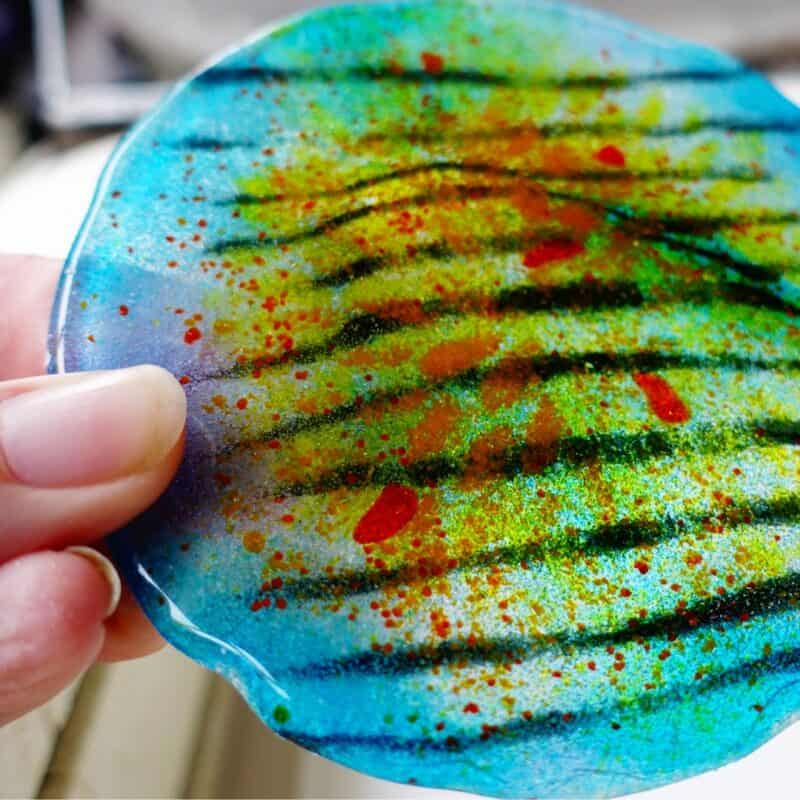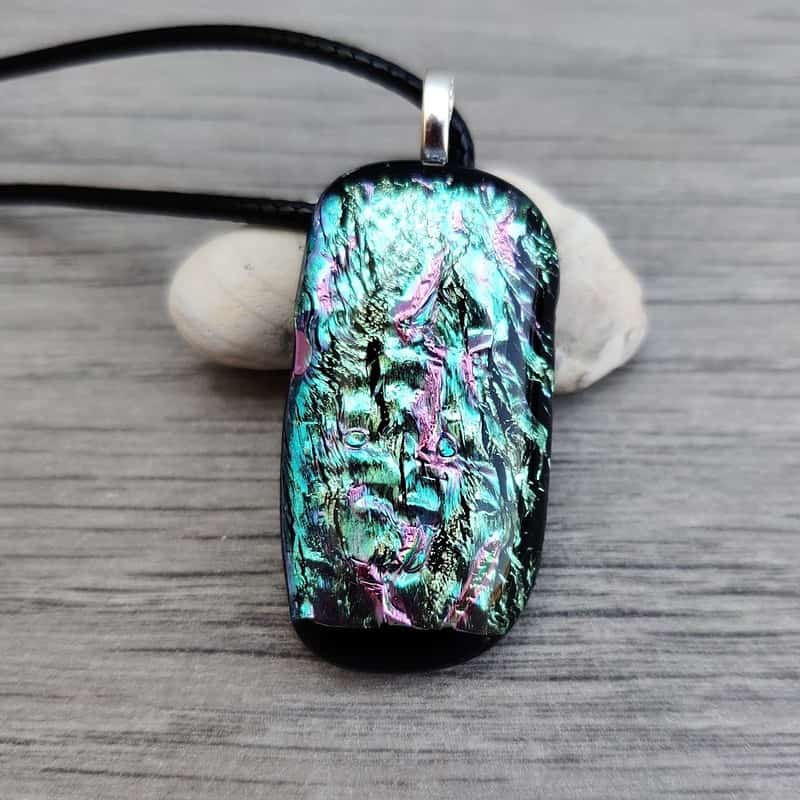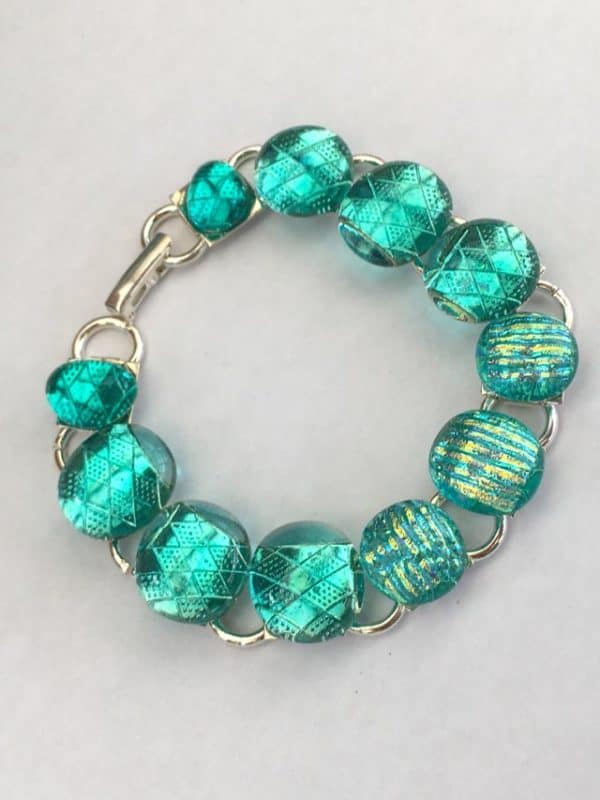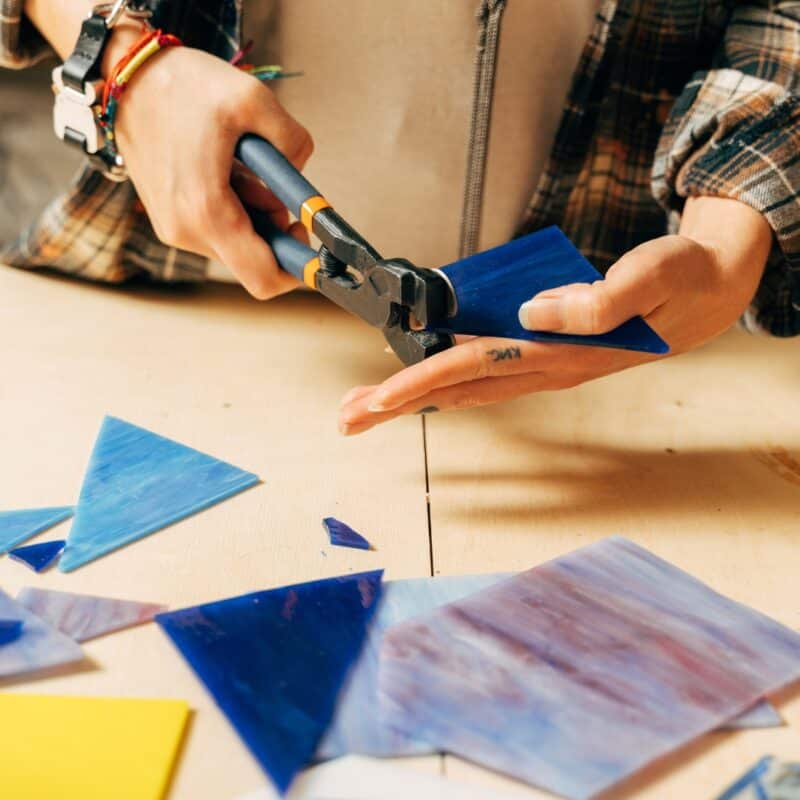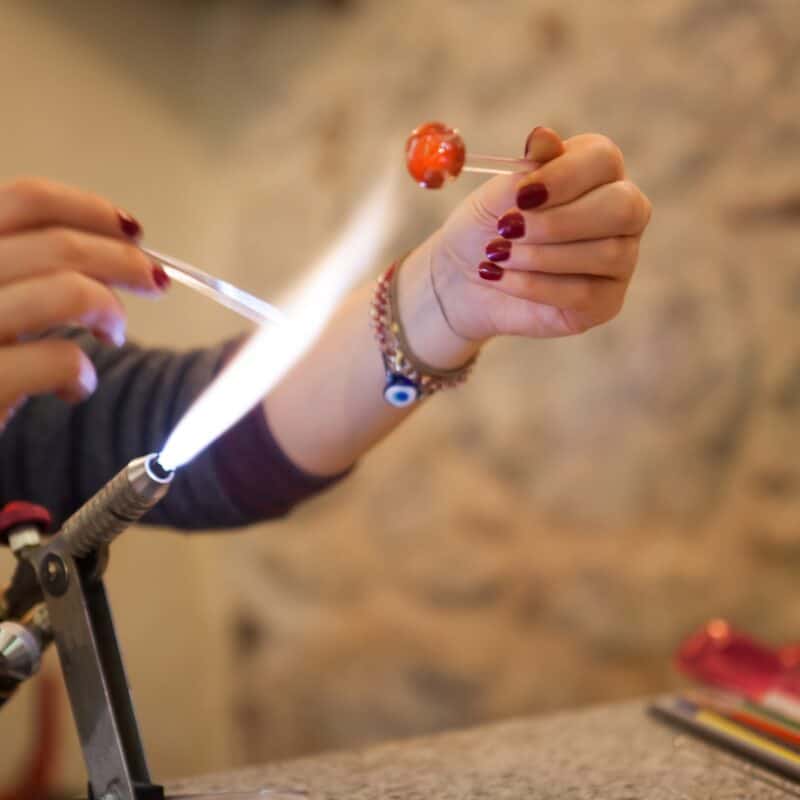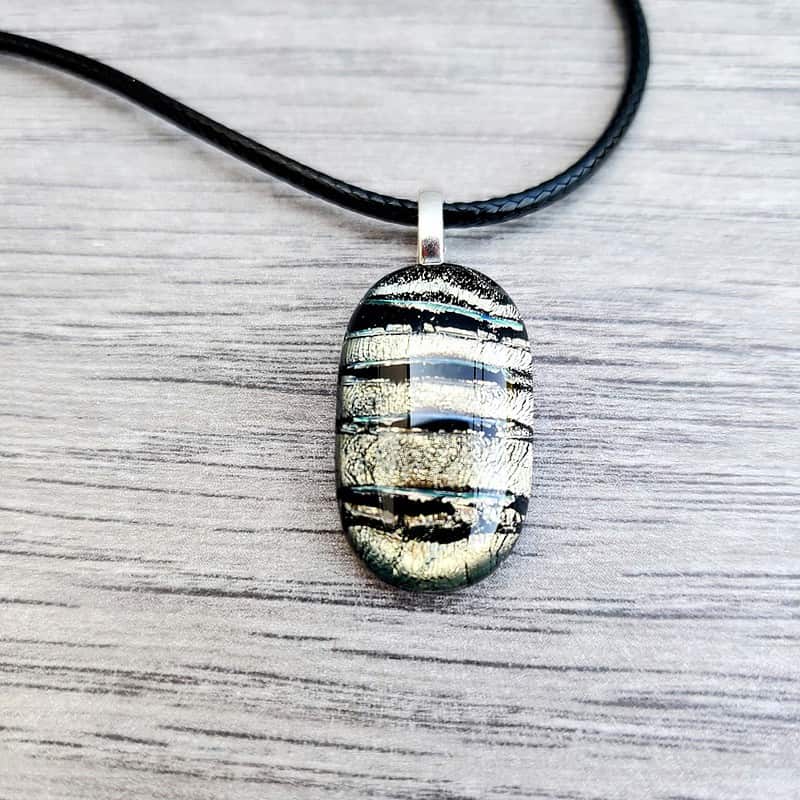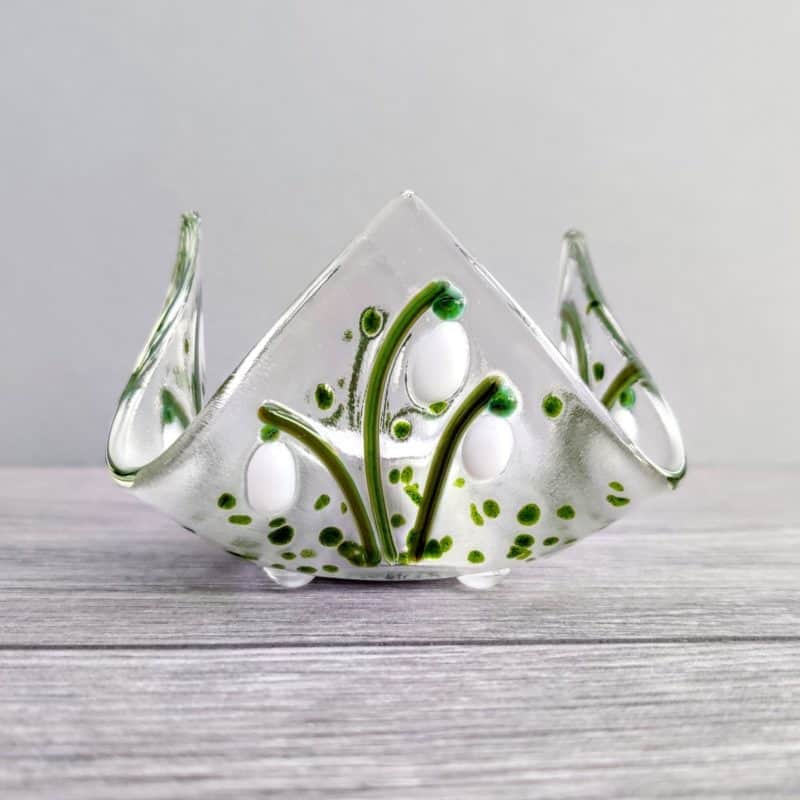Art Talk, Creative Ramblings
What’s Glass Fusing?
Glass fusing is a popular art form that involves heating two or more pieces of glass together to create stunning, one-of-a-kind pieces. In this blog post, we will delve into the in’s and out’s of this art form, covering everything from the basics to the cost and feasibility of pursuing this craft as a hobby.
Whether you’re a seasoned artist or a beginner looking to explore a new creative outlet, this guide will provide you with valuable insights and information, as well as links to recommended suppliers and artists.
Unlike Stained Glass, fusing is a technique that involves melting multiple pieces of sheet glass, powder or glass frit together in a kiln at high temperatures until they full fuse into a single piece.
This process allows artists to create a wide range of items, including jewellery, dishes, sculptures, and decorative pieces. By layering different colours and types of glass, artists can achieve unique patterns and designs in their creations. Dichroic glass is especially good for jewellery making, as it creates stunning shimmering effects.
Do You Need a Kiln for Glass Fusing?
A kiln is an essential tool for glass as it is used to heat the separate pieces of glass to the temperature required for them to fuse together. They come in various sizes and types, ranging from small tabletop kilns suitable for beginners to larger, more advanced kilns for professional artists who need more control over the temperature range.
However, not everyone has access to a kiln or the space to accommodate one, especially in a home studio. In this blog post, we’ll explore alternative methods for fusing glass without a kiln. Whether you’re a beginner looking to experiment or an artist seeking creative solutions, these techniques will offer you new ways to explore this art form. For an idea on the variety of kilns used for fusing, head on over to Warm Glass UK who have an extensive range to choose from.
Fusing Glass Without a Kiln
While a kiln is the most common tool, there are alternative methods that can be used at home. These methods may require different tools and techniques but can still yield interesting and unique results. Here are some ways to fuse glass without a kiln:
1. Microwave Kiln
A microwave kiln is a small, portable kiln that uses a microwave oven to heat compatible glass. Microwave kilns are designed to reach high temperatures quickly, allowing artists to work with fusible glass in a compact and affordable way. While microwave kilns have limitations in terms of size and firing capabilities, they can be a convenient option for creating small items at home. Amazon have a wide variety of microwave kilns available to suit any budget
2. Torch Firing
Torch firing is a technique where a torch is used, melting the glass pieces together. Artists can use a propane or butane torch to heat specific areas of the glass until they reach the desired temperature for fusing. Torch firing allows for more precise control over the heating process and can be used to create intricate designs and patterns in finished pieces. Dremel’s Gas Versaflame is highly recommended by our Guild Members
3. Hot Pot
Hot pot fusing involves using a small ceramic pot or container filled with glass stringers that are heated on a stovetop or hotplate until they fuse together. This method is suitable for melting small glass to create beautiful pendants and jewellery. The hot pot technique is a simple and accessible way to experiment without the need for a kiln. You can get your hands on a Hot Pot over at Pearsons Glass
4. Kiln Paper Fusing
Kiln paper fusing is a technique where sheets of glass are placed between layers of kiln paper and heated using a heat source such as a hotplate or torch. The kiln paper acts as a barrier to prevent the glass from sticking to the heating surface while melting glass. This method is suitable for small pieces and can be done without the need for a traditional kiln. The Creative Glass Guild comes highly recommended by our members
Tips for Fusing Glass Without a Kiln
If you’re interested in fusing glass without a kiln, here are some tips to help you get started with alternative methods;
- Choose the method that best suits your space, budget, and desired outcomes.
- Practice proper safety precautions when working with heat sources such as torches or hotplates.
- Experiment with different heating techniques and firing times to achieve the desired results in your finished pieces.
- Start with small projects to familiarize yourself with the alternative methods before tackling larger or more complex designs.
- Join online forums or workshops to connect with other artists who have experience working without a kiln and learn from their insights and tips.
While a kiln is typically used for kilnforming and slumping, there are alternative methods that allow artists to work without the need for a traditional kiln. By exploring techniques such as microwave kilns, torch firing, hot pot fusing, and kiln paper fusing, artists can experiment with different ways to create items at home or in a studio setting. Whether you’re looking to try something new or seeking creative solutions, these alternative methods offer exciting possibilities for expanding your skills.
Is Glass Fusing Easy?
While it may seem daunting to beginners, it is a craft that can be learned with practice and patience. Like any art form, mastering the tools and techniques will take time and dedication, but the results can be incredibly rewarding. With the right tools, materials, and guidance, beginners can start creating their own art pieces and jewellery, gradually improve their skills over time.
Can You Make Fused Glass at Home?
Yes, it is possible to create a glass masterpiece glass at home with the right setup and equipment. Many artists start their journey by setting up a small studio space in their homes with a kiln, basic glass cutting tools, and safety equipment.
It is important to have proper ventilation in the workspace and follow safety protocols when working with hot glass and kilns. With practice and a creative mindset, artists can explore the endless possibilities of fused glass art in the comfort of their own homes.
Is it an Expensive Hobby?
The cost as a hobby can vary depending on factors such as the quality of materials used, the size of the kiln, and the complexity of the projects undertaken.
While there is an initial investment required to purchase a kiln, glass sheets, and other tools and supplies, many artists find that the enjoyment and satisfaction they derive from creating far outweighs the expenses. Additionally, as artists gain experience and refine their techniques, they may choose to invest in higher-quality materials and equipment to elevate their craft.
Essential Tools
Glass cutting tools are essential for shaping and manipulating glass sheets into desired sizes and forms before fusing them together. Some common glass cutting tools include:
- Glass Cutter: Used to score and cut glass sheets along desired lines.
- Glass Breaking Pliers: Used to break scored glass along the cut lines.
- Glass Nippers: Used to trim and shape the glass with precision.
Kiln & Safety Equipment
A kiln is a very helpful as it allows you to heat the item to the temperature required in a controlled environment. Kilns come in various sizes and types, with different heating capabilities to accommodate various projects and firing schedules.
A kiln is a very helpful as it allows you to heat the item to the temperature required in a controlled environment. Kilns come in various sizes and types, with different heating capabilities to accommodate various projects and firing schedules.
Working with glass and kilns requires proper safety equipment to protect yourself from potential hazards. Some essential safety equipment includes:
- Safety Glasses: To protect your eyes from glass shards and debris.
- Heat-Resistant Gloves: To handle hot glass and kiln shelves safely.
- Ventilation System: To ensure proper air circulation and venting of fumes from the kiln.
Finding Supplies
In addition to tools, there are various supplies needed for creating a wide variety of items, such as:
- Glass Sheets: Different colours, types, and sizes of glass sheets for creating layers and designs.
- Glass Frits and Powders: Crushed or powdered glass used for adding colour and texture
- Shelves and Posts: To support items during firing in the kiln.
Other miscellaneous tools that can be useful for creating a fused piece include:
- Kiln Wash: A coating applied to shelves to prevent glass from sticking during firing.
- Fiber Blanket: Used for annealing hot glass after firing to cool them slowly and prevent stress cracks.
- Cutting Mat: A surface for cutting and assembling everything without damaging the fragile pieces.
Having the right tools is essential for creating anything successfully. Whether you’re working with glass sheets, firing pieces in a kiln, or ensuring your safety while working with hot glass, having a well-equipped studio with the necessary tools and supplies is key to producing high-quality glass artworks. By investing in quality tools, safety equipment, and materials, artists can embark on their creative journey with confidence.
Ready to explore different techniques?
There are a wide range of techniques for artists to experiment with and create diverse effects in the finished piece. Some popular techniques include:
Layering different colours and kiln-glass is a common technique, allowing artists to create depth and dimension in their pieces.
By stacking layers of glass sheets or arranging glass frits and powders in various combinations, artists can achieve unique patterns, textures, and colour variations in their finished work.
Glass slumping involves shaping pieces by placing them on or inside moulds called draping forms and heating them in the kiln until they take on the desired form.
This technique is commonly used to create dishes, bowls, vases, and other functional or decorative items with curved or textured surfaces.
Draping is a variation of slumping where the glass is allowed to slump over a mould to create organic shapes and forms.
Tack fusing is a technique where pieces of glass are partially fused together at a lower temperature to create a bond between them before additional layers or elements are added.
This method allows artists to build complex compositions by melting multiple components together gradually, adding depth and detail.
Glass cutting is a fundamental skill, allowing artists to shape glass sheets into desired sizes and forms before fusing them together.
Tools such as glass cutters, nippers, and breakers are used to cut and manipulate materials with precision, enabling artists to create intricate designs and compositions.
Tips for Beginners
For anyone interested in learning, here are some tips to help you get started on your creative journey:
- Start with small projects to build your confidence and skills before tackling more complex designs.
- Invest in quality tools and safety equipment.
- Experiment with different types of glass, colours, and textures to discover your unique style and artistic preferences.
- Join online communities or local workshops to connect with other enthusiasts and learn from experienced artists. If you are in Kent, we have a blog post recommending the best workshops in the area.
- Practice proper firing techniques and experiment with firing schedules to achieve different effects in your work.
What is Fused Glass Art?
Glass fusion is utilized in a variety of artistic and functional settings, such as:
Home Décor: Products such as bowls, vases, and sculptures are popular choices for adding a touch of elegance and colour to home décor. Our Guild Member Old Roar Glass has some fine examples in his shop. You should also check out Forest Arts Fusion, who made a fabulous Wedding Lantern for a friend of mine, that she absolutely adores and never switches off!
Jewellery: Glass jewellery, including pendants, earrings, and bracelets, offers a unique and eye-catching accessory for fashion enthusiasts. Check out out members Spinnaker Glass and Glassy Lassie
Art Installations: Glass can be used in large-scale art installations and architectural projects to create striking visual effects and enhance the aesthetic appeal of spaces. One of my personal favourites is Glass Art by Linda, and you will often find me wandering through her gallery in awe!
Gifts and Souvenirs: Glass items make thoughtful and personalized gifts for special occasions, showcasing the craftsmanship and creativity of the artist. Our Guildie Salvia Glass make little pebbles, which make the perfect gift for friends.
Conclusion
Art glass is a versatile and enchanting art form that allows artists to explore their creativity and express themselves through the vibrant medium of glass. By mastering techniques such as glass cutting, layering, slumping, and tack fusing, artists can create a diverse range of art products that captivate viewers with their beauty and intricacy.
Whether you’re an aspiring artist eager to create art or an art enthusiast appreciating the craftsmanship of skilled glass artists, the allure of fused art glass lies in its ability to transform simple sheets of glass into exquisite works of art that inspire awe and admiration.
Want to join the Guild?
Calling all professional artists and makers in the UK! Join the Silk Purse Guild and connect with a community of fellow creatives to elevate your craft and showcase your talents.
APPLY TODAY
